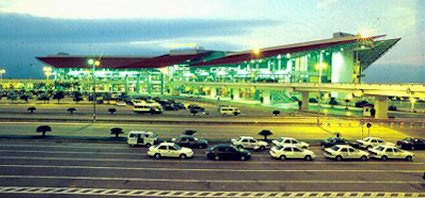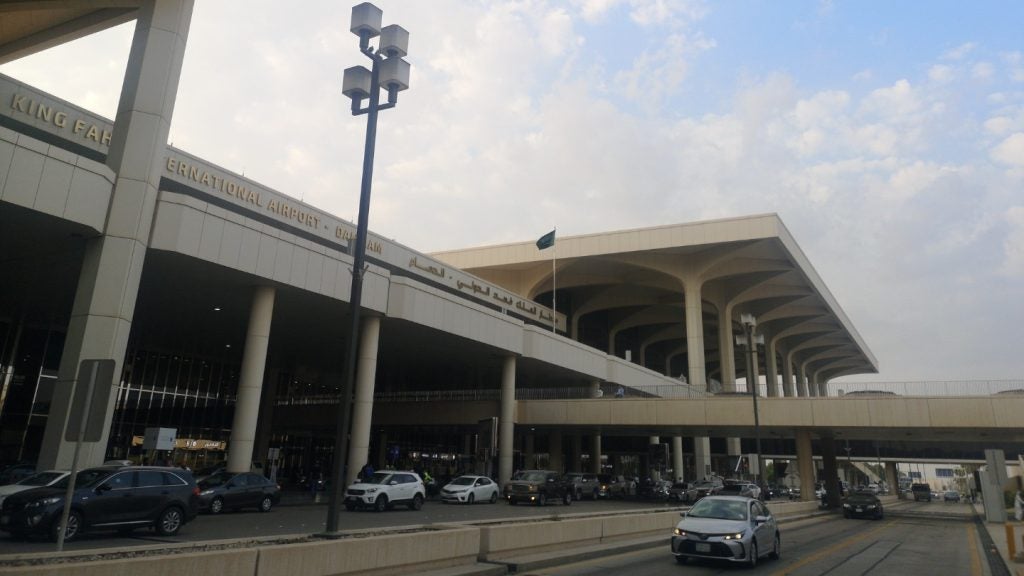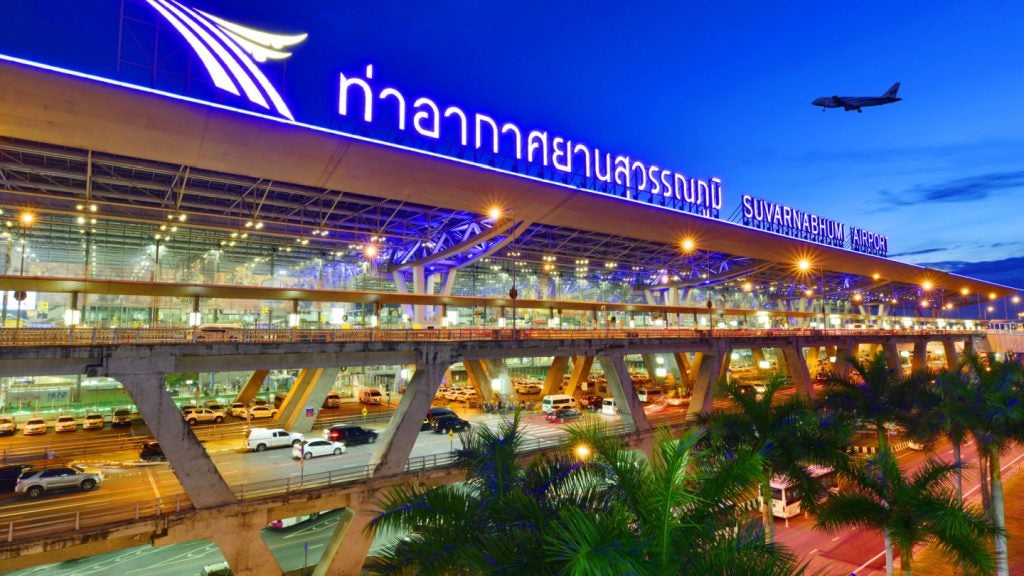Singapore Changi Airport is a major aviation hub in Asia. It is located in Changi, about 20km north-east of Singapore centre. The airport is operated by the Changi Airport Group (CAG) of the Civil Aviation Authority of Singapore (CAAS). The Singaporean Government made a decision to build Changi in 1975 following congestion at the other airports in Singapore. Phase one of the airport opened in 1981 And the airport has been experiencing rapid growth since then.
The airport handled 51.2 million passengers in 2012 becoming the sixth busiest airport in Asia by passenger traffic.
Incentives such as the Air Hub Development Fund, first introduced in 2003, have attracted airlines to the airport. A new S$300m fund to strengthen Changi’s hub status started in 2007 when the previous S$210m fund expired in 2006.
Changi also attracted low-cost airlines with a new $45m budget terminal, which opened on 26 March 2006. The airport has the JetQuay terminal, which is a dedicated commercially important person (CIP) terminal that opened in September 2006 (this is the first of its kind in Asia).
Changi Airport earned the distinction of being named the ‘Best Airport of the World’ in 2006 by Skytrax and is also rated by Skytrax as the only five-star airport in the world.
A new terminal, designated as Terminal 4 (T4), is being constructed at an estimated cost of S$1.28bn ($1.03bn), including S$600m for the terminal construction and S$680m for the airfield infrastructure construction.
T4 construction was started in November 2013 and is expected to be completed by 2017. T4 is expected to handle about 16 million passengers per year and will increase Changi Airport’s annual passenger handling capacity to 82 million by 2017.
Plans to construct a new mega terminal 5 and a three-runway system are also under review.
Changi phase one and two
The airport was constructed at the tip of the main island at Changi and required an extensive land reclamation project.
This area was chosen because land could be reclaimed from both swamp and sea and thus not use any of the valuable land in Singapore, and also noise pollution from landing aircraft was minimised by the aircraft approach being over the sea.
Land reclamation works involved the use of over 52 million cubic metres of landfill and seafill. Around 2km² of swampland was cleared and filled with 12 million cubic metres of earth from the hills nearby and a further 40 million cubic metres of sand were used to fill up the seabed, creating half of the airport’s total land area. Land reclamation was carried out by PentaOcean Construction of Japan.
Phase one of construction included the first passenger terminal building, the first runway, 45 aircraft parking bays and supporting facilities and structures, including a huge maintenance hangar, the first fire station, workshops and administrative offices, an airfreight complex, two cargo agents buildings, in-flight catering kitchens and an 80m-high control tower.
Phase two construction included the completion of a second runway, 23 more aircraft parking bays, the second fire station and a third cargo agent building.
Runways
The airport has two parallel runways, 02L/20R (4,000m) and 02C/20C (4,000m). 02L/20R was completed and opened in 1981 as part of the first phase. The second runway 02C/20C was constructed completely on reclaimed land and was opened in phase two.
A further parallel runway 02R/20L (2,748m) was built 1.8km to the east of 02C/20C (opened in 2004) but currently this is only used by Singapore Air Force and forms part of Changi Airbase to the east. The new runway is expected to be extended and eventually be turned into a third runway for airport use by 2020.
Budget terminal
The Budget Terminal was opened in March 2006 and closed in September 2012. It was demolished in 2013 to construct the new T4.
The budget terminal served budget airlines and charged lower landing fees, handling fees and airport tax as compared to the main terminal. It handled 2.7 million passengers a year, had ten contact bays and a concourse floor area of 25,000m².
It did not, however, provide the frills that the main terminals provided; for example, a shuttle bus instead of a people-mover system connects the budget terminal to the main terminals, and no aerobridges were provided to connect the plane and terminal building.
However, essential services such as air-conditioning, duty-free shops and food and drink outlets were provided.
Changi airport terminal three
Terminal 3 opened on 9 January 2008 and expanded Singapore Changi Airport’s annual capacity by 22 million passengers to 68.7 million.
The S$1.75bn ($900m) project featured the new terminal building as well as a new baggage-handling facility, an automated people mover connecting the three terminals, a new nine-storey Crown Plaza hotel (7,700m² site, accommodating 350 guests) and 28 new aerobridge gates, of which eight are able to handle the next generation of large aircraft, the Airbus A380.
The A380 landed at the airport in November 2005 and was able to test for the first time at Changi a triple passenger-loading bridge (this was the only one in service in the world at the time).
The new Terminal 3 building was designed by CPG Consultants Pte Ltd and has a gross floor area of 430,000m². Spread over seven levels (of which three are underground) the terminal houses 28 boarding gates and increases car parking by 1,800 spaces.
There is 25,000m² of floor space in the terminal for 100 retail and over 40 food and drink outlets and also 20 service concessions. In May 2006, the topping-out ceremony for Singapore Changi Airport’s Terminal 3 was conducted to mark the completion of the main terminal building’s structure and the beginning of its interior fit-out. The terminal underwent testing and inspection from November to December 2007 and was given the go-ahead to open.
Changi airport terminal four details
The T4 is being constructed on the site of the old Budget Terminal located about two kilometres away from the three main terminals.
The new terminal will comprise of a two-storey building with a gross floor area of about 195,000m², covering 15,000m² of retail spaces. The terminal design is inspired from an orchid petal. The terminal building will be 25m-high and feature 25 aerobridge gates.
The terminal project will include construction of a 300m-long Central Galleria, a new overhead vehicular bridge, two new car parks to accommodate up to 1,500 vehicles, and a new road connecting the East Coast Parkway to the T4.
A 68m-tall Ramp Control Tower will be constructed exclusively for the new terminal.
The terminal will feature kiosks for self check-in, self bag-tagging and self bag-drops, an advanced and automated baggage handling system which will be based on biometric technology, and fast and seamless travel (FAST) services.
Features of terminal three
The roof of the T3, designed by SOM (Skidmore, Owings and Merrill), features a unique architecture, which allows soft natural light into the building while keeping the tropical heat out. Terminal 3’s roof has 919 skylights with specially designed reflector panels that will automatically adjust themselves to allow an optimal amount of soft and uniform daylight into the terminal building.
At night, the skylights glow with artificial lighting, delicately concealed below the reflector panels. The building also has glass façades along both the landside and airside of Terminal 3, expanding the sense of openness.
Another feature is the five-storey-high vertical garden, called the ‘green wall’. This spans 300m across the main building so that it can be seen from both the departure and arrival halls. The ‘green wall’ is covered with climbing plants and is interspersed with four cascading waterfalls (helping to regulate the internal temperature). In addition, there is a 300m-long sculptured sandstone art wall display located below.
A 38ha plot at Terminal 3, which houses the airport nursery and a reservoir, will be converted into an aircraft parking area. The parking area will be able to accommodate up to 17 narrow-body and nine wide-body aircraft.
Baggage handling and screening systems
FKI Logistex, through its Danish subsidiary, Crisplant a/s, was appointed the leader of a consortium to supply the complete baggage handling system for the T3.
The sorting of bags is primarily based on a tilt-tray solution with Crisbag integrated into the system to handle all transfer baggage in the terminal, to function as a high-speed transport system for baggage between the three terminals (baggage moves at around 7m/s) and also function as the early baggage storage system. Transfer baggage is discharged directly from Crisbag to the baggage carousels in terminal 3.
The complete system comprises two S-3000E tilt-tray sorters, each approximately 1,000m-long, a 10,000m-long Crisbag system for the high-speed connection between terminals and the early baggage storage system, check-in conveyors, racetracks and claim carousels. Crisplant also supplied the computer control system.
The baggage screening solution was provided by L-3 Security and Detection Systems in the first agreement of its kind to look to one provider for all certified systems.
The contract specified delivery of products from L-3’s complete line of automated hold baggage-screening systems for the inspection of check-in luggage, including VIS 108 and MVT integrated level 1 systems as well as certified and computed tomography eXaminer 3DX 6000 systems for level 3 resolution.
The vast majority of deliveries began early in 2006 and continued throughout the year.
Airbus A380 preparations
Singapore Airlines was the launch customer for the giant aircraft. It placed an order worth up to $8.6bn for ten planes, with an option for 15 more. Because of this, eight of Terminal 3’s 28 gates have the capability to handle the new superjumbo.
In August 2005, Changi unveiled the first of 11 specially built gates capable of handling the giant Airbus A380 aircraft. Costing S$15m, the gates enable passengers to get on the upper cabin of the new 555-seater aircraft directly from the gate hold rooms.
The hold rooms themselves were enlarged to cater for the larger number of passengers using the A380s. A total of 11 new gates were opened at terminal 1 and 2.
In all, the Civil Aviation Authority of Singapore spent S$60m in upgrading its terminal buildings and airport infrastructure ahead of the arrival of the first A380. At the terminal buildings, besides enlarged gate hold rooms and new gates, the airport also extended the baggage belt carousels at the A380 gates to 90m (from 70m).
While the gates, the baggage-handling system and the lounges of the new terminal were all designed with the A380 in mind, the airport’s existing airfield and terminal infrastructure were also redeveloped. These works included:
- Widening of the runway and taxiway intersections to make turning easier (the runways and taxiways themselves were deemed sufficient to cope with the A380’s size and weight)
- A resurfacing project worth S$50m for both of the main runways was started in September 2007
- Downsize of some gates to allow the A380 to use existing gates without compromising safe distances between aircraft
- Addition of seating to departure lounges that serve the A380
- Expansion of the baggage handling system in terminals 1 and 2 to accommodate additional carousels and longer baggage belts
MRT extension and automated people mover
As part of an expansion of the Singapore mass rapid transit (MRT) system, the East-West line was extended to a new station at Changi International Airport, situated underground between Terminal 2 and the site for Terminal 3.
The station was completed in February 2002 although part of it is unused pending the completion of Terminal 3.
Changi Airport has also built a S$135m automated people mover system (APMS) to aid transfers between the three terminals.
The APMS is a ten-train service running between seven stations along 6.5km of elevated train tracks (there are two stations each in terminals 1 and 2 and three in terminal 3).
The trains themselves feature dedicated areas for baggage trolleys and LCD screens in the train cabins display flight times and other airport information.
Other contractors
NCS Communications Engineering was the project consultant for the total airport management system as well as airport information and telecommunication systems for terminal 3.
PWD Consultants prepared reinforced concrete and steel structural details for authority submission and tender purposes.
Fire Safety Design & Engineering performed CFD simulations and design of the ‘depressurised cabin’ principle for SHEVS and CRISP (evacuation simulation) in close collaboration with PMD Architects (Singapore). Woodhead International planned the interior of the terminal 3.
A consortium led by SAA Architects was selected by CAG to design and construct the T4, in April 2013. The consortium also includes Benoy, AECOM Singapore and Beca Carter Hollings & Ferner (SEA).
CSC Holdings will provide foundation works for the construction of the terminal 4 and other infrastructure related services, under a contract awarded in September 2013.
//do_action('thb_newsletter_subscribe_signup_second');













